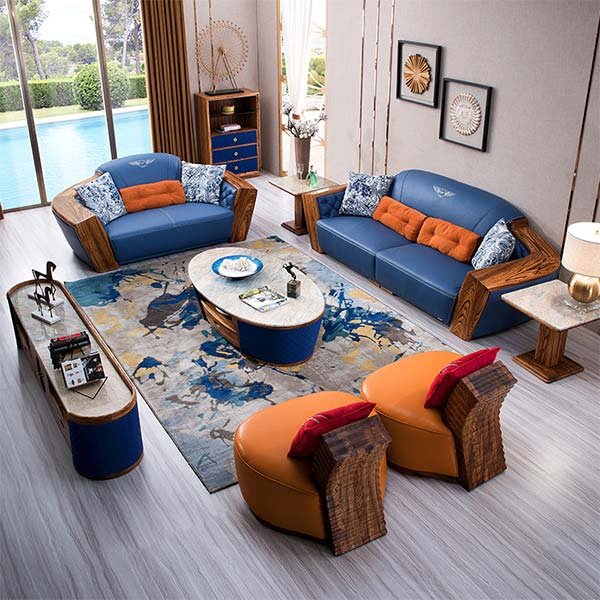“Unleash the Beauty of Wood with Cutting-Edge Furniture Innovations”
Sustainable sourcing and manufacturing practices in wooden furniture production
Sustainable sourcing and manufacturing practices in wooden furniture production have become increasingly important in recent years. As consumers become more conscious of the environmental impact of their purchases, furniture manufacturers have had to adapt and find innovative ways to create beautiful and functional pieces while minimizing their carbon footprint.
One of the key aspects of sustainable sourcing is the use of responsibly harvested wood. This means that the wood used in furniture production comes from forests that are managed in a way that ensures the long-term health and viability of the ecosystem. This includes practices such as selective logging, where only certain trees are cut down, and reforestation efforts to replace the trees that have been harvested.
In addition to responsible sourcing, manufacturers are also focusing on reducing waste and energy consumption in the manufacturing process. This includes using advanced technologies and machinery that minimize the amount of wood that goes to waste during production. Additionally, many manufacturers are investing in renewable energy sources, such as solar or wind power, to power their factories and reduce their reliance on fossil fuels.
Another important aspect of sustainable manufacturing is the use of non-toxic and eco-friendly finishes and adhesives. Traditional finishes and adhesives often contain harmful chemicals that can be released into the environment during the manufacturing process or when the furniture is in use. However, there are now a wide range of eco-friendly alternatives available that are just as effective, if not more so, than their traditional counterparts.
Furthermore, sustainable manufacturing practices also extend to the packaging and transportation of wooden furniture. Many manufacturers are now using recycled or biodegradable packaging materials to reduce waste. They are also exploring more efficient transportation methods, such as consolidating shipments or using alternative fuels for delivery vehicles, to minimize their carbon emissions.
In terms of design, sustainable wooden furniture is not limited to a specific style or aesthetic. Manufacturers are constantly innovating and experimenting with new designs and materials to create unique and environmentally friendly pieces. For example, some designers are using reclaimed wood from old buildings or furniture to create one-of-a-kind pieces with a rich history and character.
Additionally, there is a growing trend towards modular and multifunctional furniture, which allows for greater flexibility and adaptability in small spaces. This not only reduces the need for multiple pieces of furniture, but also extends the lifespan of the furniture as it can be easily reconfigured or repurposed as needs change.
In conclusion, sustainable sourcing and manufacturing practices in wooden furniture production are essential for reducing the environmental impact of the industry. By responsibly sourcing wood, minimizing waste and energy consumption, using non-toxic finishes and adhesives, and exploring innovative designs and materials, manufacturers can create beautiful and functional furniture while also protecting the planet. As consumers, it is important to support these sustainable practices by choosing furniture that is made with care for the environment.
Exploring the use of reclaimed and recycled wood in furniture design
В последние годы все больше людей обращают внимание на экологические вопросы и стремятся к устойчивому образу жизни. Это отражается во многих сферах, включая дизайн мебели. Одной из самых актуальных тенденций в современном дизайне мебели является использование переработанной и вторичной древесины. В этой статье мы рассмотрим, какие инновации появились в использовании таких материалов в дизайне мебели.
Переработанная и вторичная древесина – это материалы, полученные из старых или неиспользуемых деревянных изделий, таких как старые двери, окна, полы и даже старые мебельные изделия. Они могут быть переработаны и использованы для создания новых и уникальных предметов мебели. Это не только экологически ответственный подход, но и способ придать мебели особый шарм и характер.
Одним из преимуществ использования переработанной древесины является ее уникальность. Каждый кусок дерева имеет свою историю и уникальные черты, которые невозможно воспроизвести. Это придает мебели особый шарм и делает ее по-настоящему уникальной. Кроме того, использование переработанной древесины помогает снизить количество отходов и уменьшить негативное воздействие на окружающую среду.
Вторичная древесина также позволяет дизайнерам экспериментировать с формами и текстурами. Благодаря разнообразию доступных материалов, можно создавать мебель с необычными формами и узорами. Это открывает новые возможности для творчества и позволяет создавать по-настоящему уникальные и оригинальные предметы мебели.
Одним из самых популярных способов использования переработанной древесины в дизайне мебели является создание мебели в стиле “винтаж”. Винтажная мебель имеет особый шарм и придает интерьеру особую атмосферу. Она может быть выполнена в различных стилях, от классического до современного, и подходит для любого интерьера.
Еще одним интересным направлением в использовании переработанной древесины является создание мебели с элементами ретро-дизайна. Ретро-мебель воссоздает атмосферу прошлых времен и позволяет создать уютный и стильный интерьер. Она может быть выполнена в ярких и необычных цветах, что делает ее по-настоящему уникальной.
Кроме использования переработанной древесины, дизайнеры также активно применяют вторичные материалы, такие как древесная стружка и древесные отходы. Эти материалы могут быть использованы для создания новых и интересных текстур и узоров на поверхности мебели. Они также помогают снизить количество отходов и сделать процесс производства более экологически чистым.
В заключение, использование переработанной и вторичной древесины в дизайне мебели является актуальным и экологически ответственным подходом. Он позволяет создавать уникальные и оригинальные предметы мебели, а также снижает негативное воздействие на окружающую среду. Благодаря разнообразию доступных материалов и возможностей для экспериментов, дизайнеры могут создавать мебель с необычными формами и текстурами. Это делает современную мебель еще более интересной и привлекательной для потребителей.
Innovative techniques and technologies in creating unique wooden furniture pieces
Innovative techniques and technologies in creating unique wooden furniture pieces have revolutionized the industry, providing designers and manufacturers with endless possibilities. With the advancement of technology and the growing demand for sustainable and eco-friendly materials, the world of wooden furniture has seen a significant transformation. This article will delve into the latest innovations in wooden furniture materials and designs, shedding light on the exciting developments that have taken place.
One of the most notable innovations in wooden furniture materials is the use of reclaimed wood. Reclaimed wood refers to wood that has been salvaged from old buildings, barns, or other structures. This not only gives the wood a unique character and history but also helps reduce deforestation and waste. Designers and manufacturers are now incorporating reclaimed wood into their furniture pieces, creating stunning and sustainable designs that are both visually appealing and environmentally friendly.
Another innovative technique in wooden furniture design is the use of 3D printing. 3D printing allows designers to create intricate and complex shapes that were previously impossible to achieve with traditional woodworking techniques. This technology has opened up a whole new world of possibilities, enabling designers to push the boundaries of creativity and create truly unique and one-of-a-kind furniture pieces.
In addition to 3D printing, computer-aided design (CAD) software has also played a significant role in the innovation of wooden furniture design. CAD software allows designers to create detailed and precise digital models of their furniture pieces, making it easier to visualize and refine their designs before they are brought to life. This not only saves time and resources but also ensures that the final product meets the designer’s vision and specifications.
Furthermore, advancements in wood treatment and finishing techniques have also contributed to the innovation in wooden furniture materials and designs. Traditional wood finishes, such as varnish or lacquer, have been replaced with more eco-friendly options, such as natural oils or water-based finishes. These new finishes not only enhance the natural beauty of the wood but also provide better protection against wear and tear.
Moreover, the integration of smart technology into wooden furniture has also gained popularity in recent years. Smart furniture incorporates features such as built-in charging ports, wireless charging capabilities, and even voice-activated controls. These technological advancements not only add convenience and functionality to furniture pieces but also cater to the needs and preferences of the modern consumer.
In conclusion, the world of wooden furniture has witnessed a remarkable transformation with the introduction of innovative techniques and technologies. From the use of reclaimed wood to 3D printing and smart technology integration, designers and manufacturers are pushing the boundaries of creativity and sustainability. These advancements not only provide endless possibilities for unique and visually appealing designs but also contribute to the preservation of our environment. As the demand for eco-friendly and sustainable furniture continues to grow, it is exciting to see what the future holds for the world of wooden furniture materials and designs.
Заключение
Заключение: В последние годы наблюдается значительный прогресс в инновациях в области материалов и дизайна деревянной мебели. Были разработаны новые материалы, такие как композитные древесно-полимерные материалы, которые обладают высокой прочностью и долговечностью, а также имеют возможность имитировать различные текстуры и оттенки дерева. Дизайнеры также активно экспериментируют с формами и структурами, создавая уникальные и функциональные предметы мебели. В целом, инновации в материалах и дизайне деревянной мебели позволяют создавать современные и стильные изделия, которые сочетают в себе эстетику и практичность.



